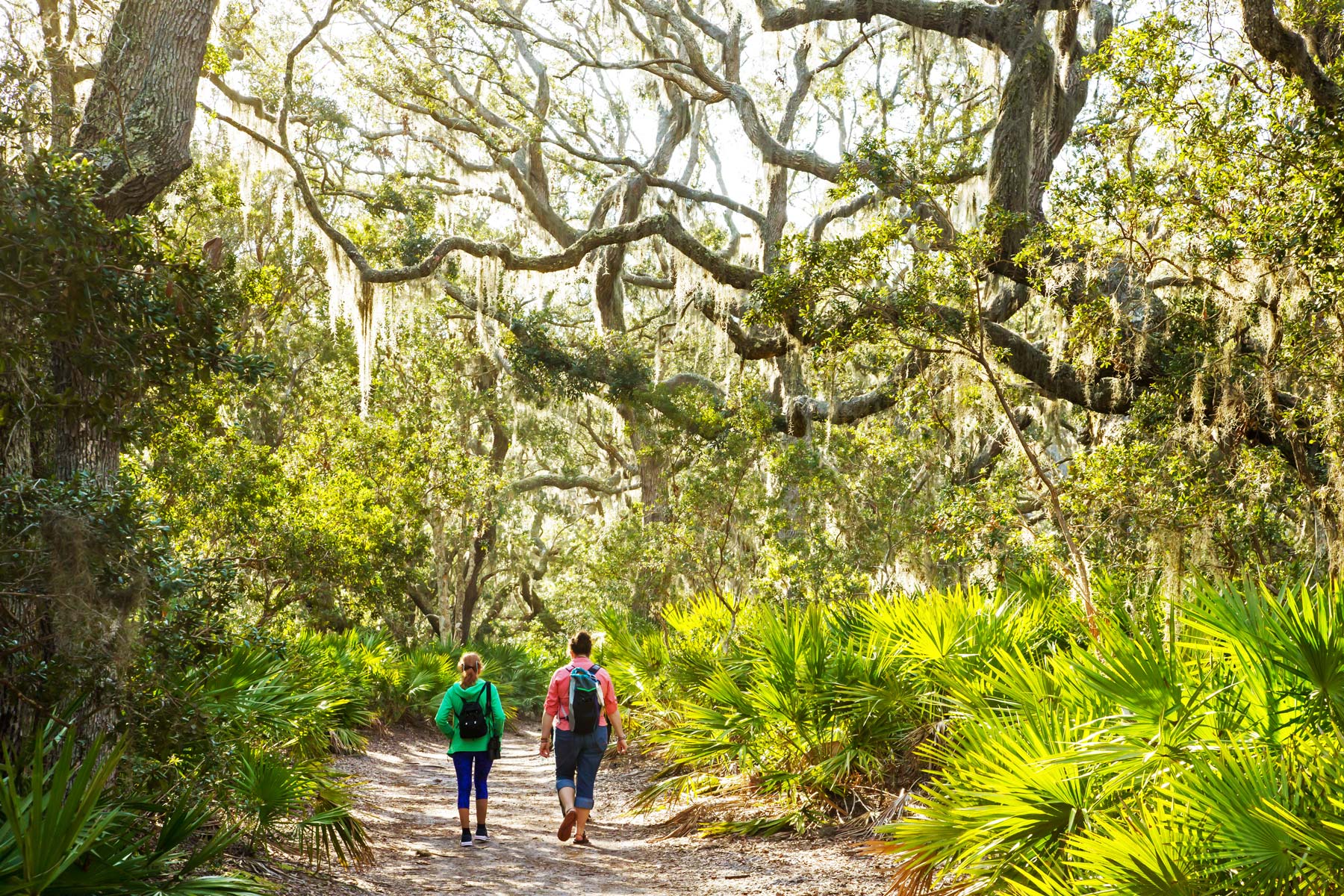
Article Summary: Georgia National Parks
I’ve got Georgia on my mind! As a long-time resident of the Peach State (I’ve been living in Georgia for 35+ years!), I’m delighted to share some of the best places to visit in my home state. Here’s a list of 12 incredible Georgia national parks.
And More Than Just Parks is your one-stop-shop when it comes to learning everything you’ll need to know about America’s national parks.
We’ve got expert guides, beautiful photos, helpful tips, breathtaking films and so much more.
While Georgia has many national park sites, I should note that it doesn’t actually have any congressionally designated “National Parks”. Nonetheless, there are a whole host of amazing Georgia National Park Service sites to visit.
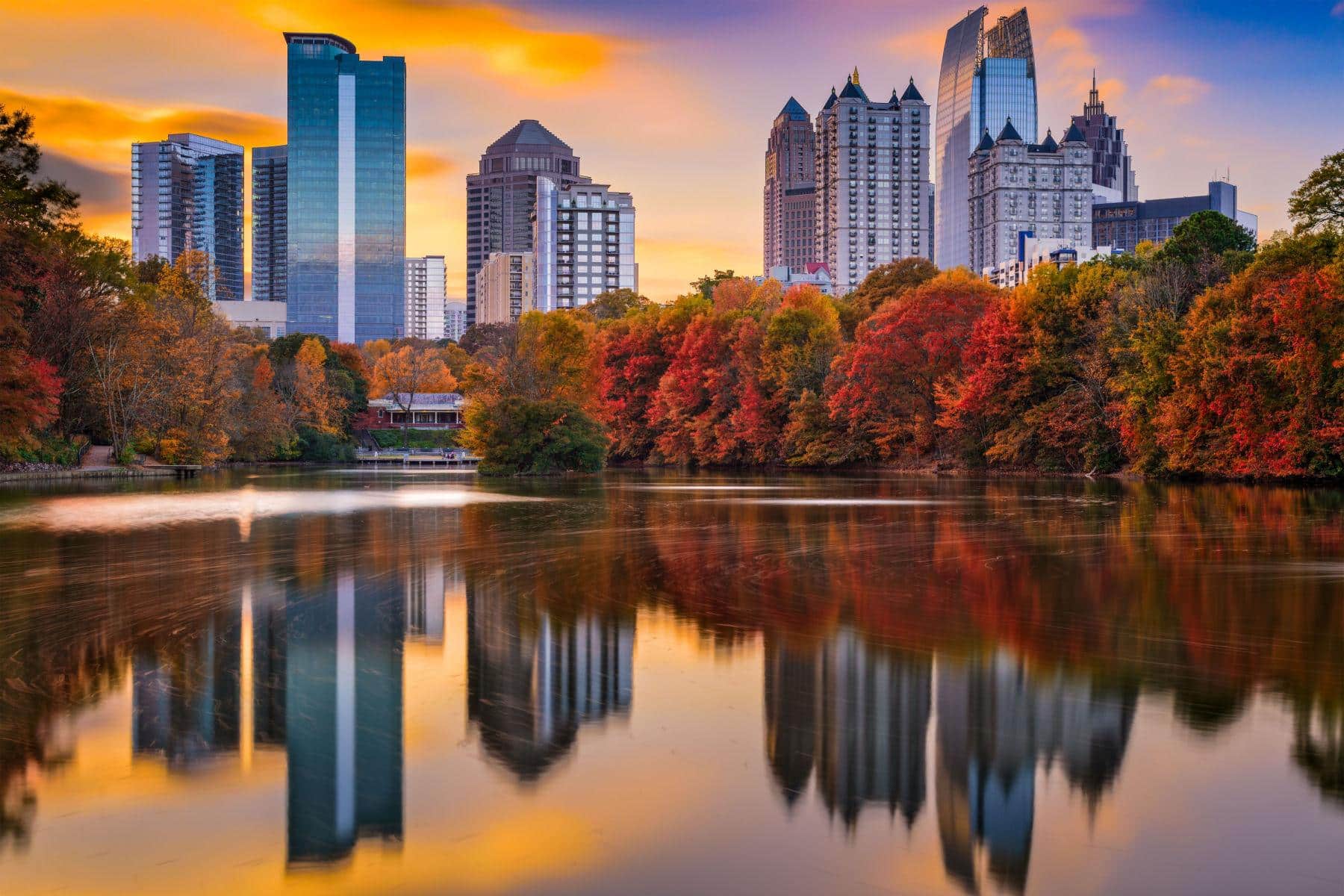
What Is A National Park?
We get asked that question a lot because there’s a difference between a “national park” and a “national park site.” To help you understand that difference you might want to check out our article titled: What Is A National Park Really?
Native American burial mounds, beautiful gator-filled swamps, wild horses on stunning seashores, presidential sites, civil rights leaders, and so much more await you in Georgia!
If you’re planning a trip to the Peach State then one book that I highly recommend is: Georgia Discovered: Exploring the Best of the Peach State by Chris Greer.
Without further ado, let’s dive in!
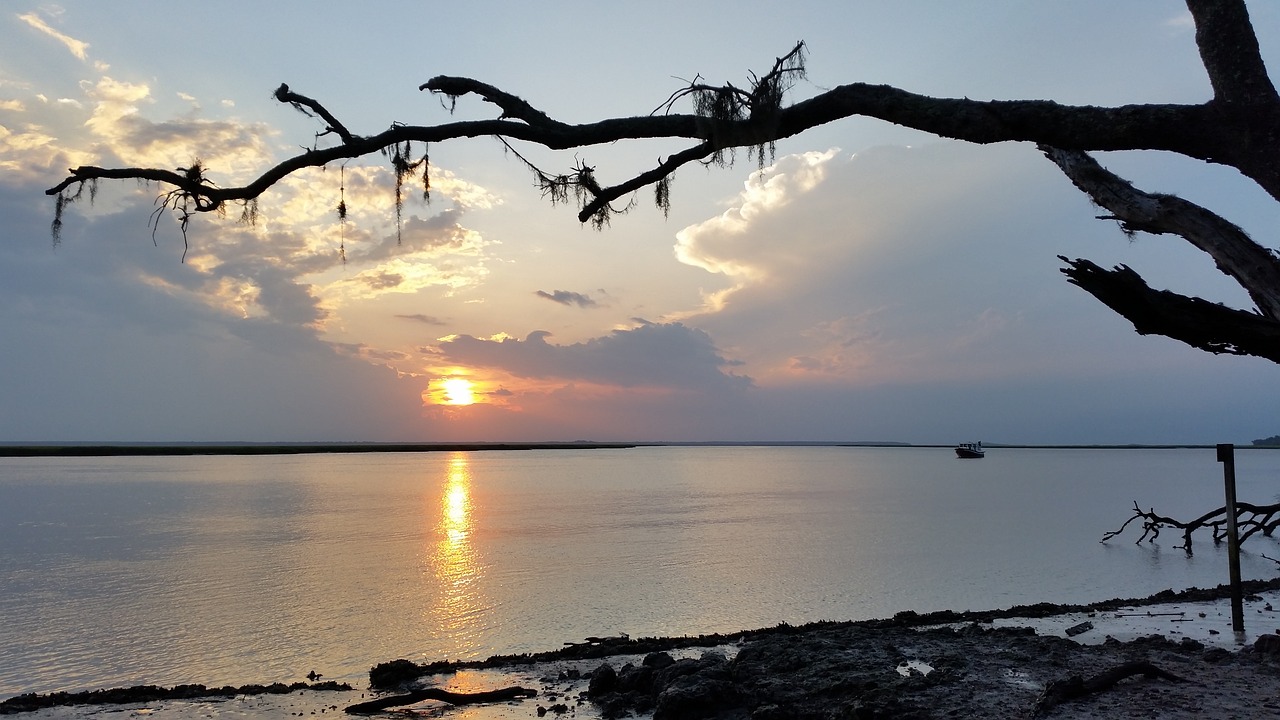
Table Of Contents: Georgia National Parks
Georgia National Parks
- About Our Travels Through Georgia’s National Parks
- Georgia National Parks
- More Georgia National Parks
- Still More Georgia National Parks
- Check Out Our Great Smoky Mountain Film
- Georgia National Parks FAQ
- Meet The Parks Brothers
- Map of Georgia National Parks
- List Of Top 12 Georgia National Parks
- We Hope You’ll Follow Our Journey
- Helpful Articles
About Our Travels Through Georgia’s National Parks
I’ve seen all of the incredible national park sites the state has to offer (some more than once). I spent my career teaching history right here in Georgia as a matter of fact. I can tell you that these places have quite a story to tell.
My personal favorite Georgia National Park unit is Cumberland Island. The history of the place alone is incredible, not to mention the stunning beauty that exists there.
With that being said, all of these places are worth a visit. Hopefully you’ll enjoy them as much as I do!

RELATED: Whose Island Is It Anyway | A History & Guide To Cumberland Island
Georgia National Parks
1. Andersonville National Historic Site
Andersonville National Historic Site is a historic site located in Andersonville, Georgia. The site is the location of Camp Sumter, also known as Andersonville Prison, which was a Confederate prisoner-of-war camp during the American Civil War. The prison was in operation from 1864 to 1865 and was notorious for its extremely poor conditions, which resulted in the deaths of over 13,000 Union soldiers.
The site includes the Andersonville National Cemetery, where the remains of Union soldiers who died at the prison are buried. The cemetery also contains the graves of prisoners of other conflicts, including World War II, the Korean War, and the Vietnam War.
The site also includes the Andersonville National Historic Site Visitor Center, which houses exhibits and displays about the history of the prison, the prisoners, and the conditions they endured. Visitors can also take a self-guided tour of the prison site, which includes the remains of the prison stockade and the remnants of the prison hospital.
The Andersonville National Historic Site is a unit of the National Park Service and is a National Historic Landmark. It is open to the public year-round and provides a sobering reminder of the harsh realities of war and the sacrifices made by prisoners of war. The site also serves as a Memorial for all American prisoners of war.

See The Sacrifices Made By American Prisoners Of War
America’s bloodiest conflict was a case study in human sacrifice. Roughly 2% of the population, an estimated 620,000 men, lost their lives in the line of duty.
Taken as a percentage of today’s population, the toll would have risen as high as 6 million souls. The human cost of the Civil War was beyond anybody’s expectations.
To truly understand and appreciate the magnitude of this disaster, I recommend reading: This Republic of Suffering: Death and the American Civil War by Drew Gilpin Faust.
If you’re a history buff, like me, a visit to the park provides an excellent opportunity to explore the sacrifices made by American prisoners of war during our nation’s bloodiest conflict. According to the Park Service, most visitors spend at least two hours.
If you have a special interest in the Civil War, however, you can easily spend your entire day at the Andersonville National Historic Site.
RELATED: 10 BEST Civil War Sites In America
2. The Appalachian National Scenic Trail
The Appalachian National Scenic Trail, also known as the A.T, is a long-distance hiking trail that runs along the East Coast of the United States, from Springer Mountain in Georgia to Mount Katahdin in Maine, covering a total distance of about 2,200 miles.
The trail is one of the most famous hiking trails in the world and is considered one of the premier long-distance hiking trails in the United States.
The trail passes through 14 states, including Georgia, North Carolina, Tennessee, Virginia, West Virginia, Maryland, Pennsylvania, New Jersey, New York, Connecticut, Massachusetts, Vermont, New Hampshire, and Maine.
It goes through a wide variety of landscapes, including forests, mountains, and meadows, and passes through many different ecological regions, including the Southern Appalachians, the Blue Ridge Mountains, the Green Mountains, and the White Mountains.

The Trail Is Maintained By A Network Of Volunteer Organizations
The trail is maintained by a network of volunteer organizations and the National Park Service. Hikers can choose to hike the entire trail in one trip, a journey that typically takes about 5-7 months, or they can choose to hike sections of the trail. The trail is marked with white blazes and is well-maintained with shelters and campsites along the way.
The trail is a great way to experience the natural beauty and cultural heritage of the Appalachian Mountains. It offers an opportunity to connect with nature, challenge oneself physically and mentally, and for many, it is a spiritual experience.
The trail is open year-round, but some sections may be closed due to weather or other factors. It is a National Scenic Trail, and a unit of the National Park Service.
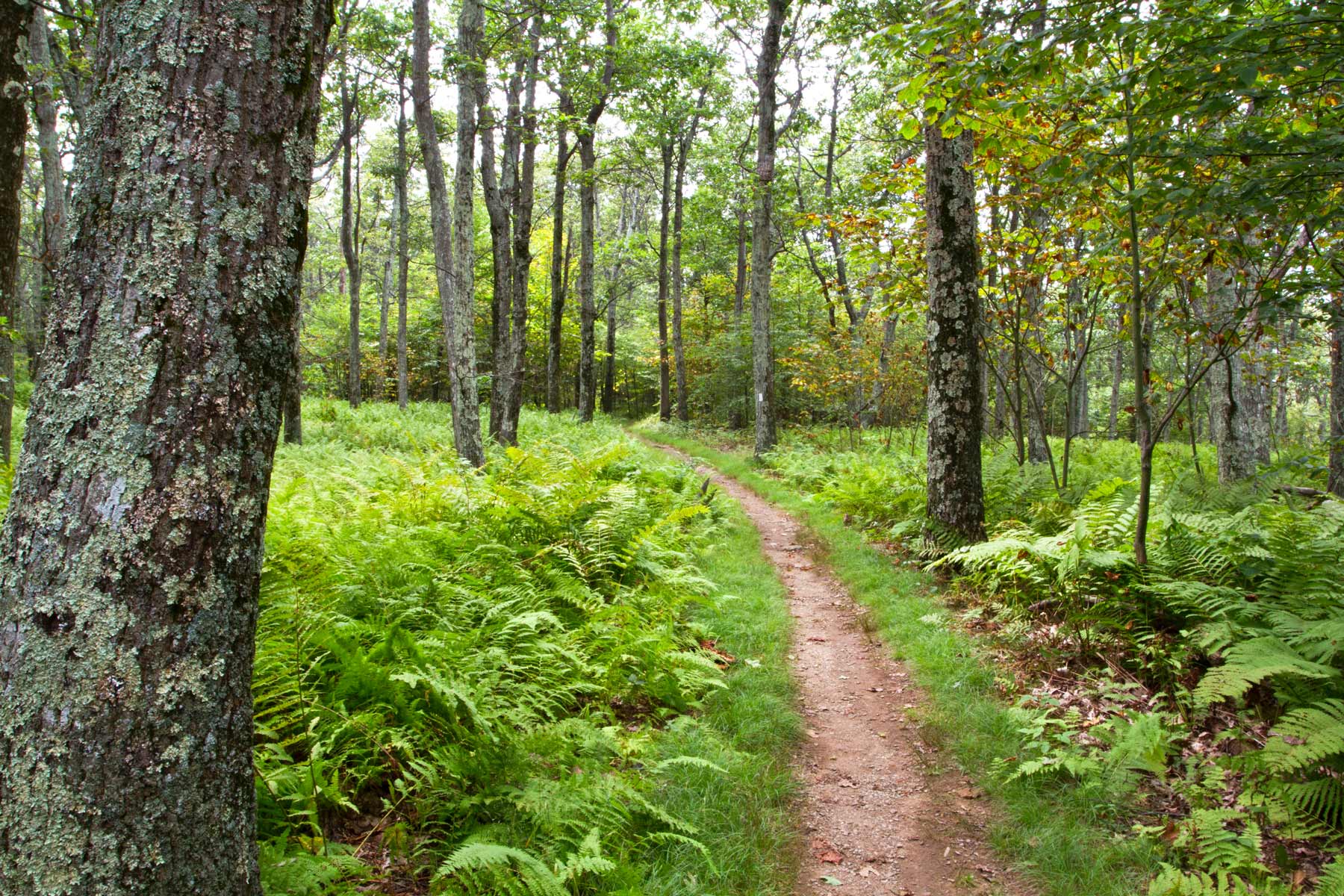
3. Chattahoochee River National Recreation Area
The Chattahoochee River National Recreation Area is a national recreation area located in the northern suburbs of Atlanta, Georgia. It’s managed by the National Park Service and is designed to protect and preserve the natural resources of the Chattahoochee River and its tributaries.
The recreation area is one of the most popular outdoor destinations in the region and offers a wide range of recreational activities for visitors.
The recreation area includes 48 miles of the Chattahoochee River and its tributaries, which are popular for fishing, boating, and rafting. The area also includes 15 parks and historic sites, which offer hiking and biking trails, picnic areas, and playgrounds. The area also features several campgrounds, as well as a number of boat ramps and fishing piers.
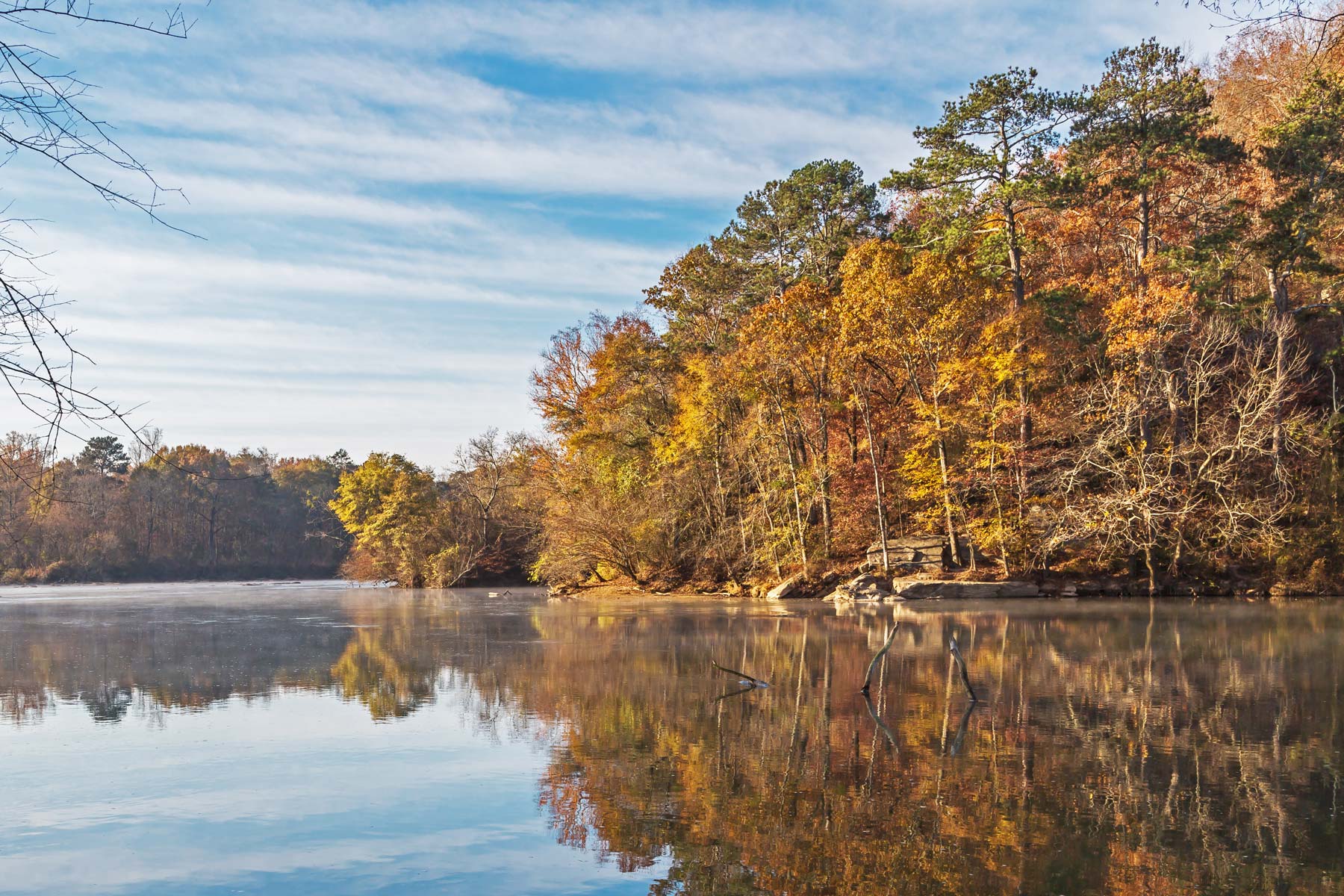
It’s Home To A Diverse Array Of Plant & Animal Life
The recreation area is also home to a diverse array of plant and animal life, including species such as the American black bear, the American beaver, and the Eastern box turtle.
The recreation area also includes several historic sites, including the New Manchester Manufacturing Company, which was an important textile mill during the Civil War, and the Sope Creek Paper Mill, which was a major paper mill during the 1800s.
The Chattahoochee River National Recreation Area is open year-round and offers a variety of recreational activities, including fishing, boating, hiking, and camping.
Visitors can also take guided tours of the historic sites, and learn more about the natural and cultural history of the area. The recreation area is a great place to enjoy the outdoors and learn more about the natural beauty and history of the region.
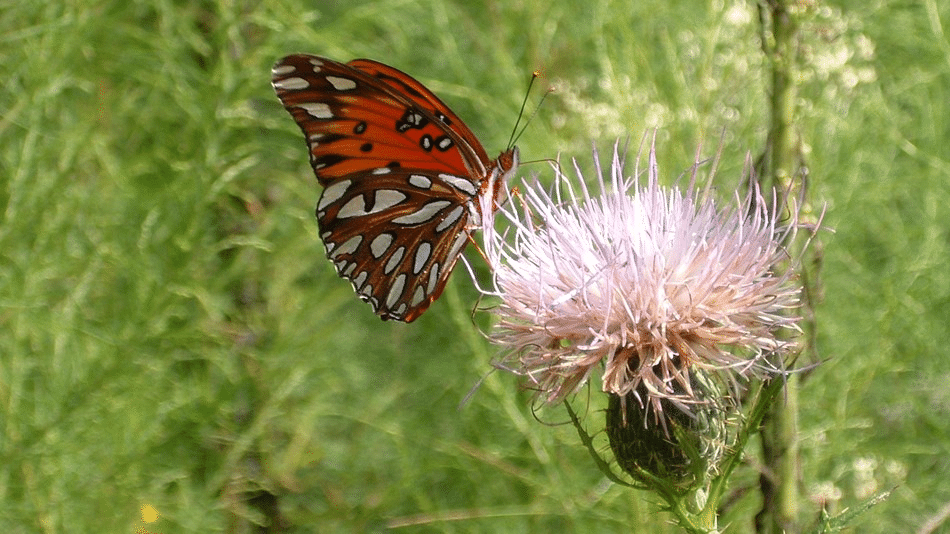
Floating the River
If you’re a fisherman then it’s a great place to catch bass and catfish year-round. For 48 miles, from Buford Dam to Peachtree Creek, the Chattahoochee River is a designated trout stream giving those who love to fish some of the best trout fishing in North Georgia!
If you like a lazy trip down the river then tubing might be the way to go.
Minutes from Downtown Atlanta, the Nantahala Outdoor Center rents tubes, inflatable kayaks and paddleboards. You can explore up to 8 miles of flatwater and Class I-II whitewater.
If you’re a boating enthusiast, there’s also canoeing and white water rafting available. Whitewater Express, Columbus, Georgia, takes thrill-seekers and families on exciting rafting adventures
“I want to make it clear, if there is ever a conflict [between environmental quality and economic growth], I will go for beauty, clean air, water and landscape.”
-Jimmy Carter
4. Chickamauga & Chattanooga National Military Park
From Civil War Generals to Noble Prize Winners, Georgia is a state rich in history.
During the Civil War, Chattanooga was the “Gateway to the Deep South.” Battles were fought there and at Chickamauga which proved decisive in the ultimate defeat of the Confederacy.
History buffs remember that it was at Chickamauga that Union General William Rosecrans was beaten by Confederate General Braxton Bragg.
The Union Army was saved from annihilation by the stubborn defense of George Thomas and his soldiers. This defense earned Thomas the nickname of the “Rock of Chickamauga.”
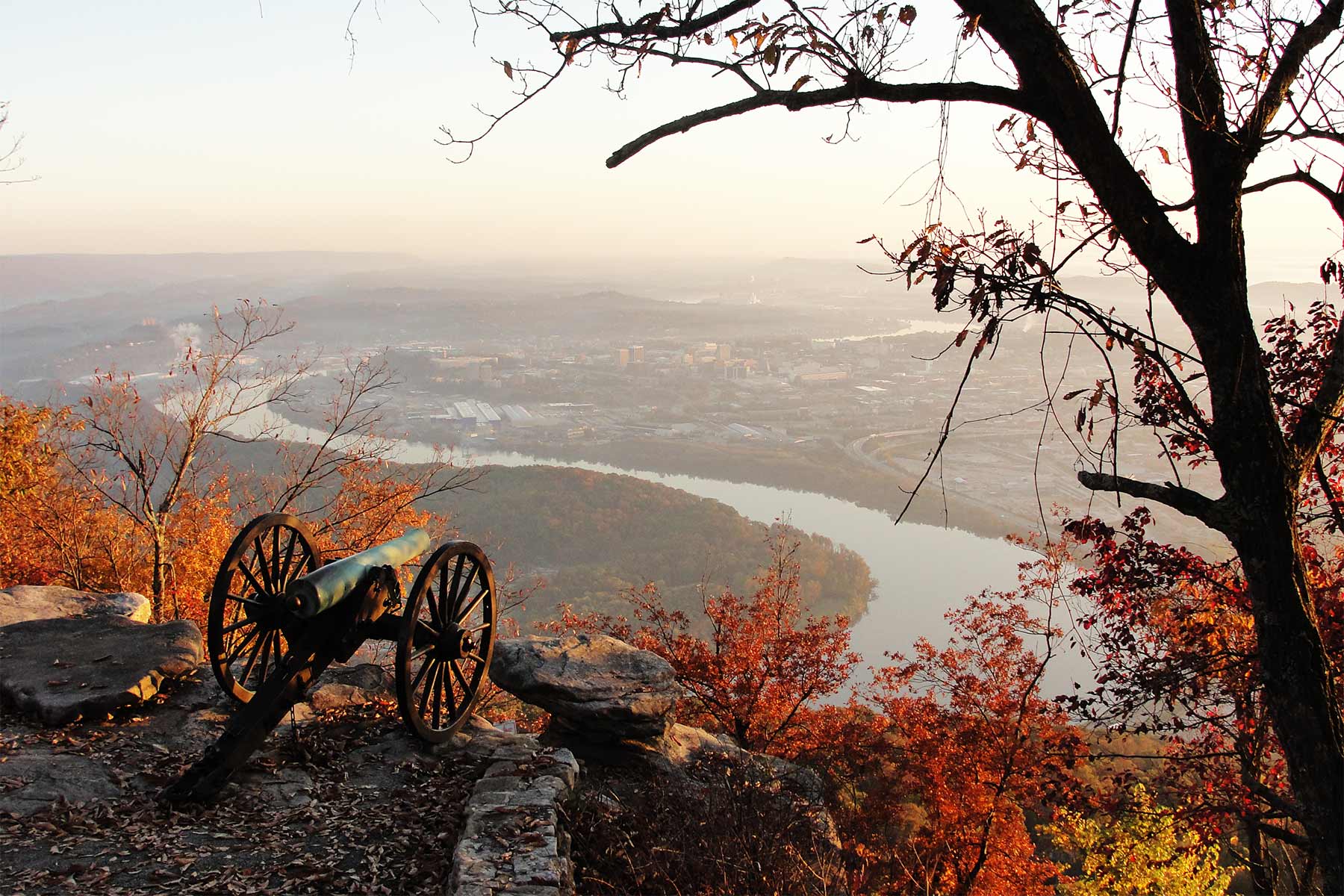
RELATED: 9+ Mississippi National Parks For Your Dixie Bucket List (Expert Guide)
A Union Victory at Chattanooga
The battered Union forces were then reorganized under the leadership of Ulysses S. Grant. They went on to win battles at Orchard Knob, Lookout Mountain and Missionary Ridge. These victories opened the west to Union forces.
At the Battle of Lookout Mountain, Union forces under the command of General George “Rock of Chickamauga” Thomas swept the Confederates from the field.
After these victories, Ulysses S. Grant traveled east to take command of all of the Union armies. He left William Tecumseh Sherman in the west to take Atlanta. And take Atlanta Sherman did!
Relive That History Today
Today, you can relive part of this exciting history at the Chickamauga Battlefield Visitor Center. One of my favorite Georgia National Parks is the Chickamauga National Military Park.
At the visitor center you will find museum exhibits on the Battle of Chickamauga and Campaign for Chattanooga.

If You’re A History Buff Like Me
Believe it or not, I was one of those guys who sat in class taking notes and, when the professor threw out the name of what sounded like an interesting book, I not only wrote it down, I actually went out and purchased it. Yes, I am that guy which is why I ended up teaching history.
If you love history as much as I do and you’re particularly interested in how this conflict impacted the men who fought in Georgia then I heartily recommend Scott Walker’s Hell’s Broke Loose in Georgia: Survival in a Civil War Regiment.
Walker is a gifted writer who uses primary sources skillfully to take his readers into the hearts and minds of the everyday soldiers.
Especially moving are the letters, diaries, and other information the author uses to recount the terrible toll this conflict took on the soldiers and families of the 57th Georgia infantry. It’s a deeply impactful account of the horrors of war.

RELATED: 45 Best National Parks Books (Great Gifts For Park Lovers)
5. Cumberland Island National Seashore
Cumberland Island National Seashore is a protected area located on the southern coast of Georgia. The history of Cumberland Island National Seashore is closely tied to the history of the island itself, which has been inhabited for thousands of years.
The indigenous Timucua people were the first to call Cumberland Island home, and evidence of their settlements can still be found on the island. In the 16th century, Spanish explorers arrived on the island and established a mission.
In the 18th century, British colonists took over the island and established large plantations, using enslaved Africans to work the land. The island remained under British control until the end of the American Revolution, when it became part of the newly formed United States.
During the Civil War, Cumberland Island was a site of intense military activity. Union soldiers used the island as a base of operations, and the Confederates attempted to take control of it several times.
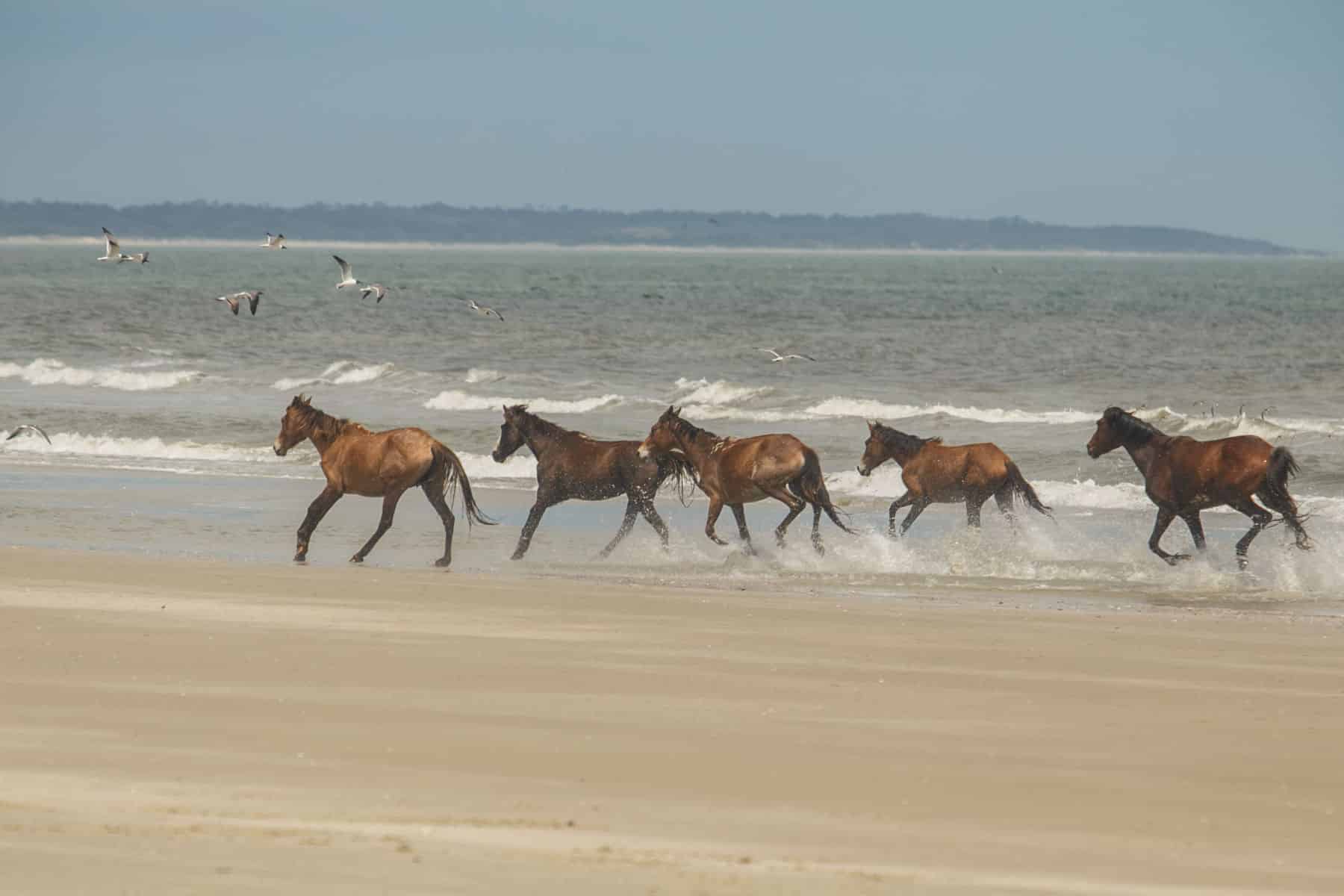
Cumberland Island After The Civil War
After the war, the island was gradually abandoned by its residents and became a wilderness area. In the early 20th century, the Carnegie family, one of the wealthiest families in America, purchased the island and built a number of impressive mansions there.
The Carnegies used the island as a private retreat, but they also allowed scientists and naturalists to conduct research on the island.
In the 1960s, the National Park Service began to consider making Cumberland Island a protected area. After years of debate and negotiation, Congress established Cumberland Island National Seashore in 1972.
Today, the park covers over 36,000 acres and includes a variety of natural habitats, from beaches to marshes to forests. It is home to a wide variety of plant and animal species, including sea turtles, dolphins, and the famous wild horses that roam the island.

RELATED: Whose Island Is It Anyway| A History & Guide To Cumberland Island
Here are some things to do on Cumberland Island
- Hiking: The island has over 50 miles of hiking trails that wind through a variety of ecosystems, including beaches, forests, and marshes. The trails range in difficulty, from easy walks to challenging treks.
- Beachcombing: With 17 miles of pristine beaches, Cumberland Island is an ideal place to hunt for seashells, sand dollars, and other treasures.
- Wildlife Viewing: Cumberland Island is home to a variety of wildlife, including wild horses, armadillos, alligators, and a wide variety of bird species. Visitors can spot these creatures in their natural habitats throughout the island.
- Camping: The island has several campgrounds where visitors can pitch a tent and spend the night. The campgrounds are accessible only by foot or bicycle, making for a truly immersive experience in nature.
- Historic Tours: Cumberland Island has a rich history, and visitors can learn about the island’s past by taking a historic tour. Tours are available of the island’s former mansions, as well as the ruins of Dungeness, an old plantation house.
- Kayaking and Canoeing: The island’s marshes and waterways provide an opportunity for visitors to explore by kayak or canoe. Guided tours are available, or visitors can rent equipment and explore on their own.
- Fishing: Cumberland Island has a variety of fishing opportunities, from surf fishing on the beach to casting a line in the island’s tidal creeks.
- Stargazing: The island’s remote location and lack of light pollution make it an ideal place to stargaze. Visitors can marvel at the night sky and spot constellations they may not be able to see in more populated areas.
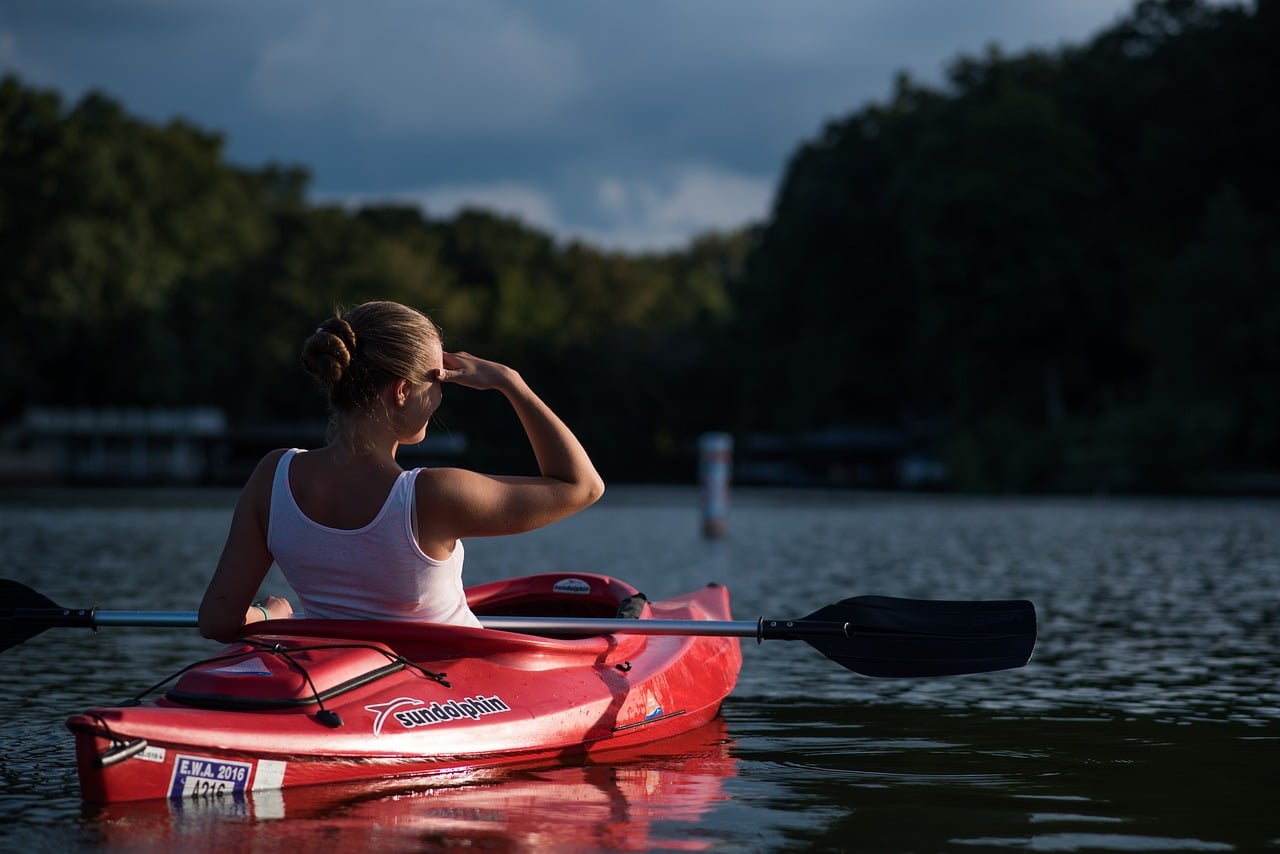
More Georgia National Parks
6. Fort Frederica National Monument
Fort Frederica National Monument is a historical site located on St. Simons Island, Georgia. The monument preserves the remains of a British fort and town established in the mid-1700s by James Oglethorpe.
The fort was built to protect the southern boundary of the British colony of Georgia from Spanish invasion. The town of Frederica, which was home to soldiers and their families, grew up around the fort.
Visitors to the park can explore the remains of the fort, the town, and an 18th-century church, as well as a visitor center with exhibits on the history of the area. The park offers guided tours, hiking trails, and ranger-led programs.
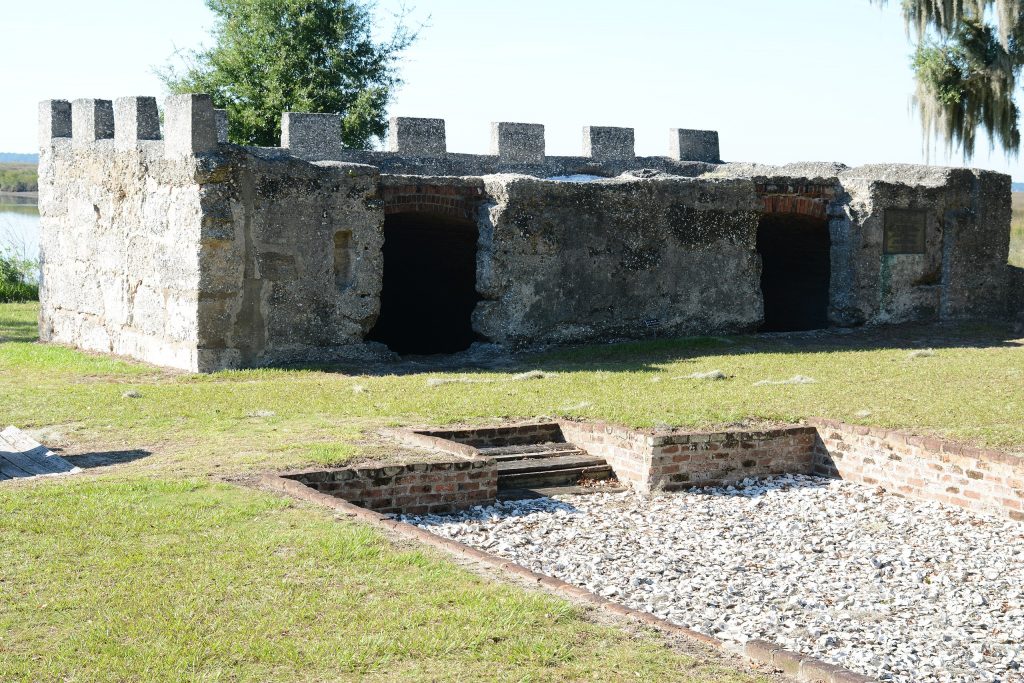
RELATED: All Of Florida’s National Parks RANKED (+ Video)
7. Fort Pulaski National Monument
Fort Pulaski National Monument is a historical site located on Cockspur Island, Georgia. The monument preserves the remains of a Confederate fort built in the early 1800s to protect the port of Savannah from naval attack.
The fort was named after Kazimierz Pułaski, a Polish-born hero of the American Revolution.
Visitors can tour the fort, which features exhibits on its history and the technology of the time, as well as hike on the trails around the fort and the island, and participate in ranger-led programs.
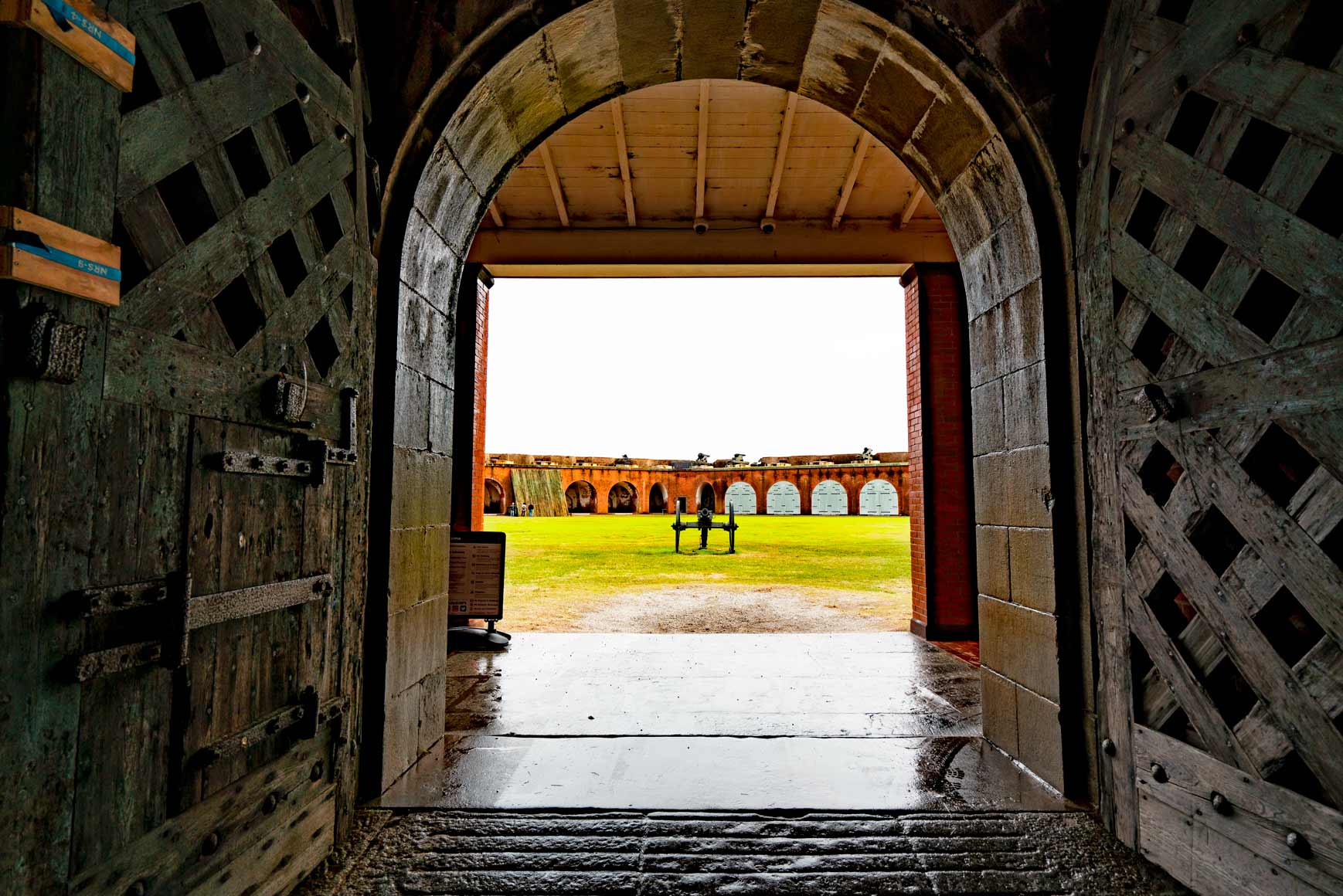
Pulaski in the Civil War
The fort figured prominently during the Civil War. The only battle at Fort Pulaski occurred on April 10th & 11th, 1862, between Union forces on Tybee Island and Confederate troops inside the fort. Union forces occupied the fort beginning in April of 1862.
It was used as a place where the Union tested new weaponry including a rifled canon. The fort also held Confederate prisoners of war.
Today the fort, which is only 20 minutes east of Savannah, offers its visitors an incredible series of outdoor exhibits.
You can discover rooms housed with period furnishings and beautiful nature trails. It’s definitely worth a trip especially if you love history, nature or both.
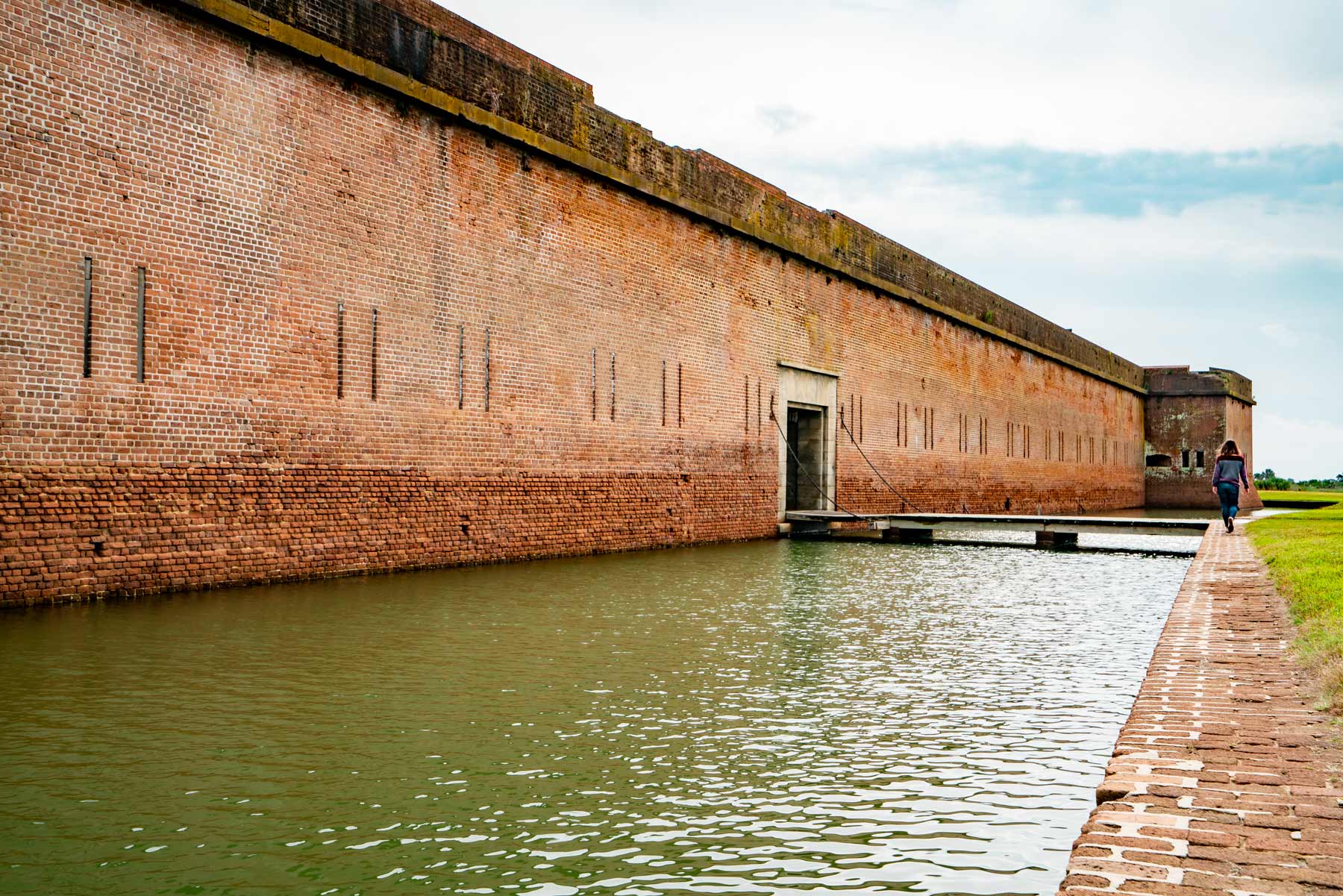
8. Jimmy Carter National Historical Park
History is finally catching up with Jimmy Carter – a visionary president who today is recognized as having been decades ahead of his time.
From his historic achievements in conservation and the environment to improving relations with Latin America and brokering peace in the Middle East to promoting racial justice and gender equality, America’s 39th President of the United States has an amazing story to share.
While some people consider Theodore Roosevelt to have been America’s Greatest Conservation President, More Than Just Parks has selected Jimmy Carter for this prestigious honor instead.
FIND OUT WHY WE CHOSE JIMMY CARTER: No, Theodore Roosevelt Was Not The Greatest Conservationist President. It Was Jimmy Carter.
The Story Begins In Plains, Georgia
Jimmy Carter’s incredible story begins in the small town of Plains, Georgia.
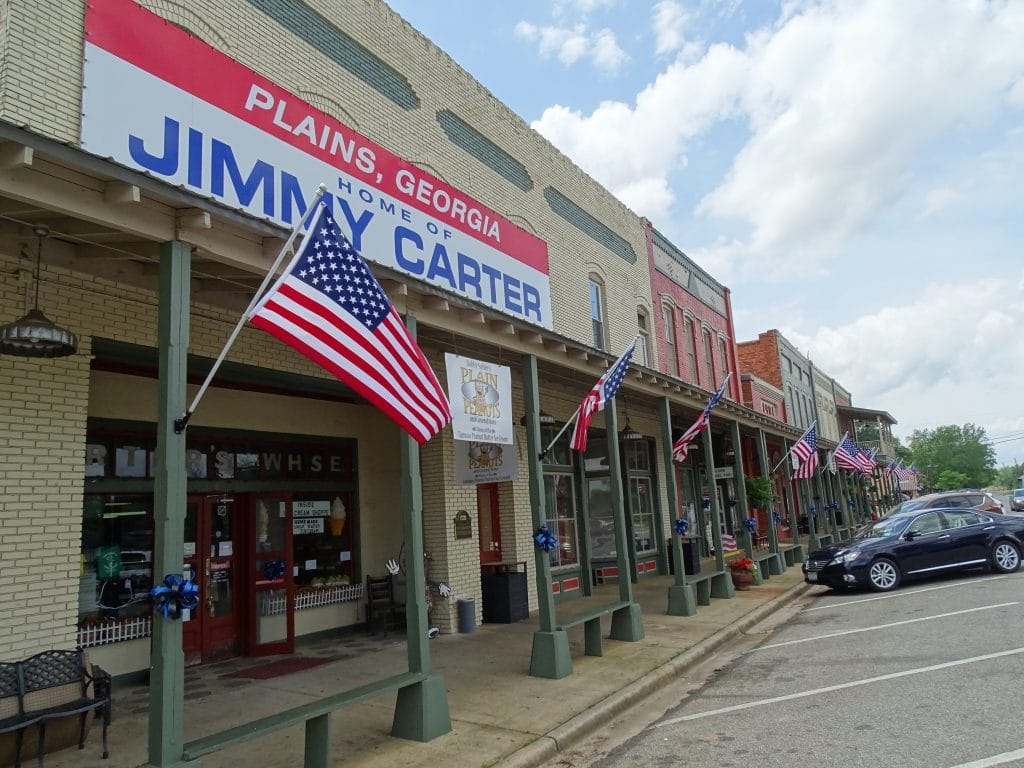
Carter Was Focused On The Environment Long Before He Became President
Jimmy Carter championed protecting his state’s natural resources long before he became president.
In 1967, alongside leaders in business, government, and academia, Carter, who had served in the Georgia State Senate, lent his support to the creation of the Georgia Conservancy.
“I honestly believe that our greatest potential force for meeting challenges to our environment is in the several thousand highly-motivated and well-educated Georgians who are members of the Georgia Conservancy,” said Carter in his remarks at the 1968 Georgia Conservancy Conference.
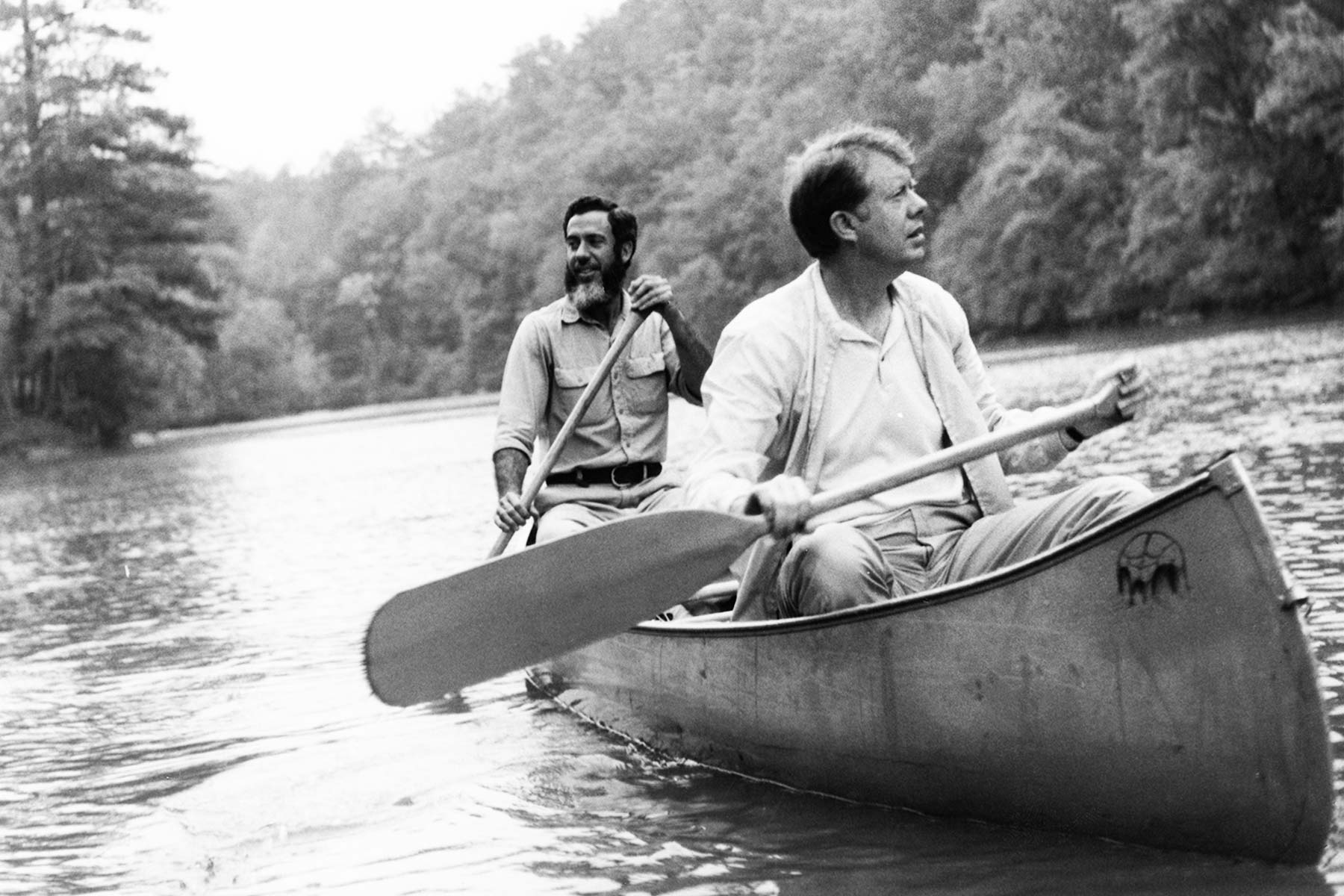
RELATED: 13 Reasons Why Jimmy Carter Is America’s Greenest President
Jimmy Carter’s Presidency Was Not What You Think
Regrettably, the political narrative surrounding President Carter in the aftermath of his 1980 defeat to Ronald Reagan has largely been shaped by his political adversaries. The reality, however, is quite different.
Kai Bird is a Pulitzer Prize-winning historian and journalist. He is the author of The Outlier: The Unfinished Presidency of Jimmy Carter.
Bird notes in a New York Times editorial that Carter was probably the most intelligent, hard-working and decent man to have occupied the Oval Office in the 20th century.
As Bird writes, “His [Carter’s] presidency is remembered, simplistically, as a failure, yet it was more consequential than most recall. He delivered the Camp David peace accords between Egypt and Israel, the SALT II arms control agreement, normalization of diplomatic and trade relations with China and immigration reform.”
“He made the principle of human rights a cornerstone of U.S. foreign policy, planting the seeds for the unraveling of the Cold War in Eastern Europe and Russia.”

The President Who Tried To Save The Planet
In an article which appeared in the Washington Post in February of 2023, the newspaper referred to the former president as: “Jimmy Carter, The President Who Tried To Save The Planet.”
The Post went on to note that: “Despite serving a single term, Jimmy Carter ranks as one of the most consequential U.S. presidents when it comes to environmentalism, according to historians, conservationists and several former federal officials.”
To Learn More About Carter’s Groundbreaking Work As A Conservationist & Environmentalist, check out the following articles by More Than Just Parks:
(1) Jimmy Carter Was The Greatest Conservation President
(2) 14 Reasons Why Jimmy Carter Is America’s Greenest President
Things To See & Do at The Jimmy Carter National Historical Park

Here are some things to see and do at the park:
- Visit the Jimmy Carter Boyhood Farm: This is the home where Jimmy Carter spent his early years, and it has been restored to its 1930s appearance. Visitors can tour the house and see the farm buildings, gardens, and the nearby pond.
- Walk the trails: The park has several trails that wind through the fields and forests around Plains. The trails range from easy walks to more challenging hikes and offer a chance to see wildlife and natural features such as swamps and wetlands.
- Explore the Plains High School Museum: This museum is located in the building that was formerly the Plains High School, where Jimmy Carter attended. It features exhibits on the history of the school and the community, including exhibits on the local African American community and the 1976 presidential campaign.
- Tour the Carter compound: This is the home where Jimmy and Rosalynn Carter have lived since they left the White House. Visitors can take a guided tour of the home and see the gardens and the former president’s woodworking shop.
- Attend special events: The park hosts a number of special events throughout the year, including a Christmas festival, a peanut festival, and a commemoration of the March 21, 1965 civil rights march from Selma, Alabama to Montgomery, Alabama.
- Visit the Visitors Center: The Visitors Center offers exhibits, films, and information about the park and the surrounding area. It also has a gift shop and a bookstore with books on Jimmy Carter’s life and presidency.
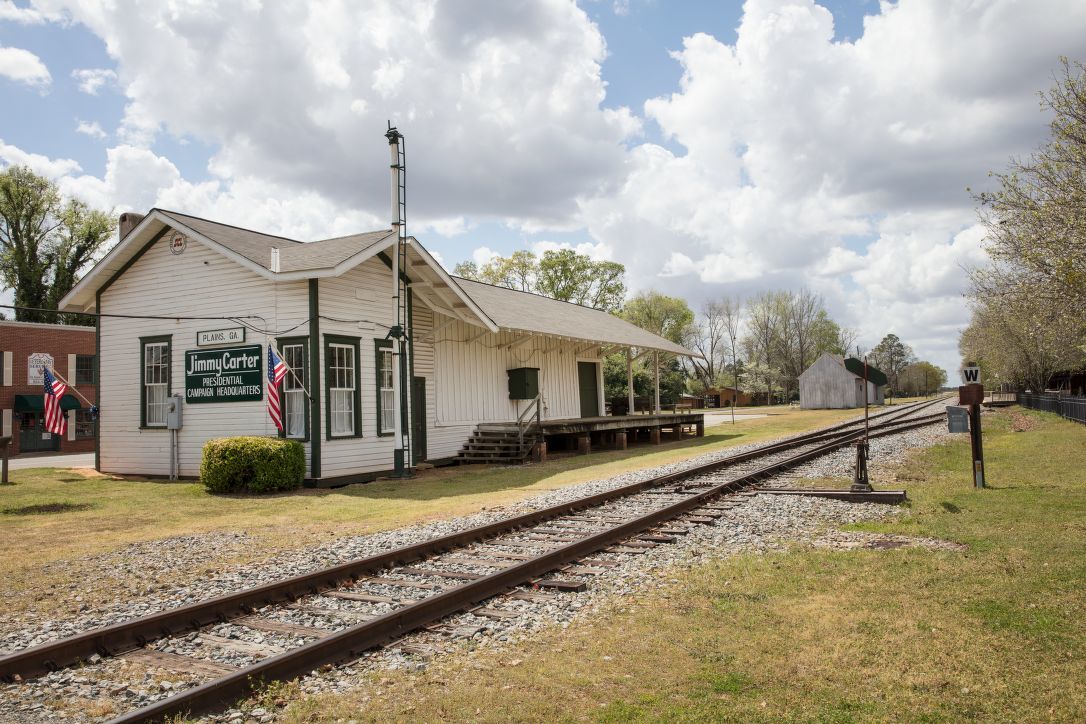
If you’re as fascinated by the forward-thinking and visionary presidency of Jimmy Carter as I am then I would recommend two wonderful books.
His Very Best by Jonathan Alter and The Outlier: The Unfinished Presidency of Jimmy Carter by Kai Bird.
“I have one life and one chance to make it count for something… My faith demands that I do whatever I can, wherever I am, whenever I can, for as long as I can with whatever I have to try to make a difference.”
-jimmy carter
The Pattiz Brothers With The 39th President Of The United States

Learn About Our President Carter Film
9. Kennesaw Mountain National Battlefield Park
Kennesaw Mountain National Battlefield Park is a historical site located in Kennesaw, Georgia.
The park preserves the site of a Civil War battle that took place in 1864 during the Atlanta Campaign. Union forces under General William T. Sherman clashed with Confederate troops under General Joseph E. Johnston in a series of engagements that resulted in significant casualties on both sides.

The park features a visitor center with exhibits on the history of the battle, as well as a number of hiking trails that lead to historic earthworks and other landmarks associated with the battle.
Visitors can also see the Kennesaw Mountain, which was an important strategic point during the battle. The park also offers guided tours and ranger-led programs.

RELATED: 10 BEST Civil War Sites In America
10. Martin Luther King, Jr. National Historical Park
The Martin Luther King Jr. National Historical Park is a historical site located in Atlanta, Georgia.
The park preserves several buildings and sites associated with the life and work of Dr. Martin Luther King Jr., the civil rights leader who played a key role in the American civil rights movement of the 1950s and 1960s.
The park includes the birth home of Dr. King, where he lived from his birth in 1929 until 1941; the Ebenezer Baptist Church, where Dr. King and his father were both pastors; and the Martin Luther King Jr. Center for Nonviolent Social Change, which was founded by Dr. King’s wife, Coretta Scott King, after his assassination in 1968.

The park also includes a visitor center with exhibits on Dr. King’s life and legacy, as well as the International Civil Rights Walk of Fame.
The park offers ranger-led tours and a variety of educational programs.
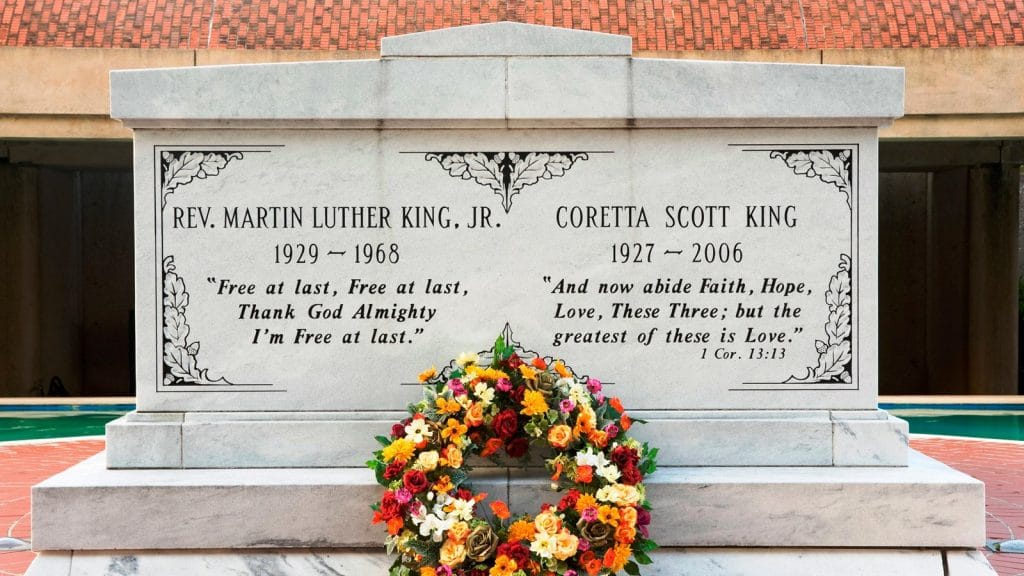
RELATED: 10 BEST Civil Rights Sites In America
Still More Georgia National Parks
11. Ocmulgee Mounds National Historical Park
The Ocmulgee Mounds National Historical Park is a historical site located in Macon, Georgia.
The park preserves a prehistoric Native American archaeological site that includes a complex of earthworks and mounds that were built by the Mississippian culture between 900 and 1150 AD.
The site includes the Great Temple Mound, which is the largest prehistoric earthen structure in the southeastern United States, and a number of other mounds, plazas, and village sites.
Visitors can tour the park and see the mounds, as well as visit the park’s visitor center, which features exhibits on the archaeology and history of the site and the people who built it. The park also offers guided tours and ranger-led programs.
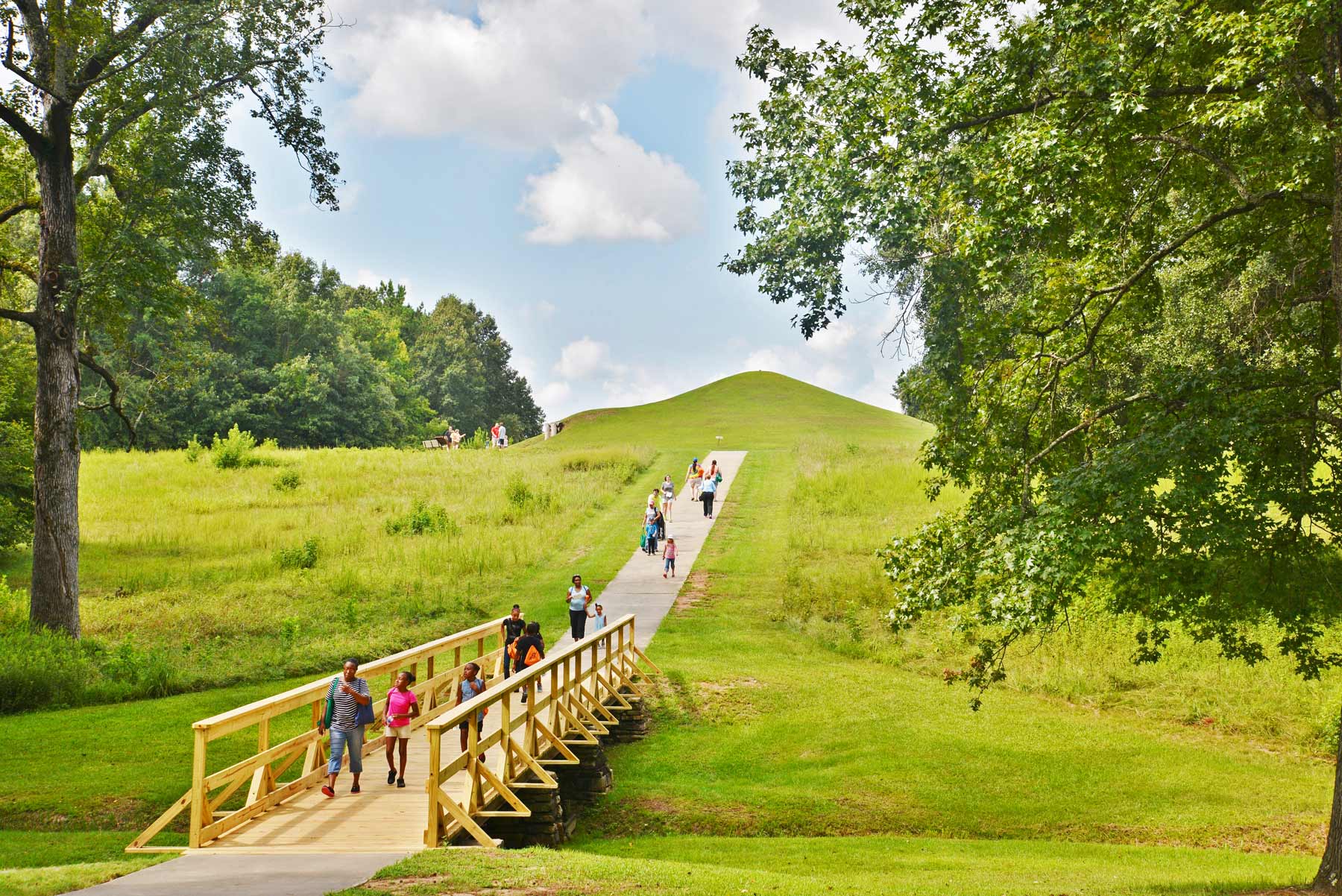
Be Sure To Check Out The Archaeology Museum
How many Georgia National Parks actually include an archaeology museum? Ocmulgee does!
It features a visitor center which includes an archaeology museum. It displays some of the artifacts that have been discovered there as well as interpreting the successive cultures of the prehistoric Native Americans who inhabited this site for thousands of years.
There’s also a short orientation film plus a gift shop which has a variety of craft goods and books related to the park.
RELATED: 25 Bucket List Famous Landmarks In America (MUST-SEE)
12. Warm Springs Historic District
The Warm Springs Historic District is a historic district located in Warm Springs, Georgia. The district is known for being the location of the Little White House, a residence used by President Franklin D. Roosevelt while he was in office.
The residence was built in 1932 and was used as a presidential retreat by Roosevelt, who sought the therapeutic benefits of the warm springs for his polio-related paralysis.
The district includes the Little White House, the Meriwether Inn, the Warm Springs Pool, the Roosevelt Memorial Park, and other buildings and sites associated with the history of the area, including the FDR’s personal cottage, servant’s quarters, and the baths he used to receive the treatment.
The district offers guided tours and ranger-led programs.
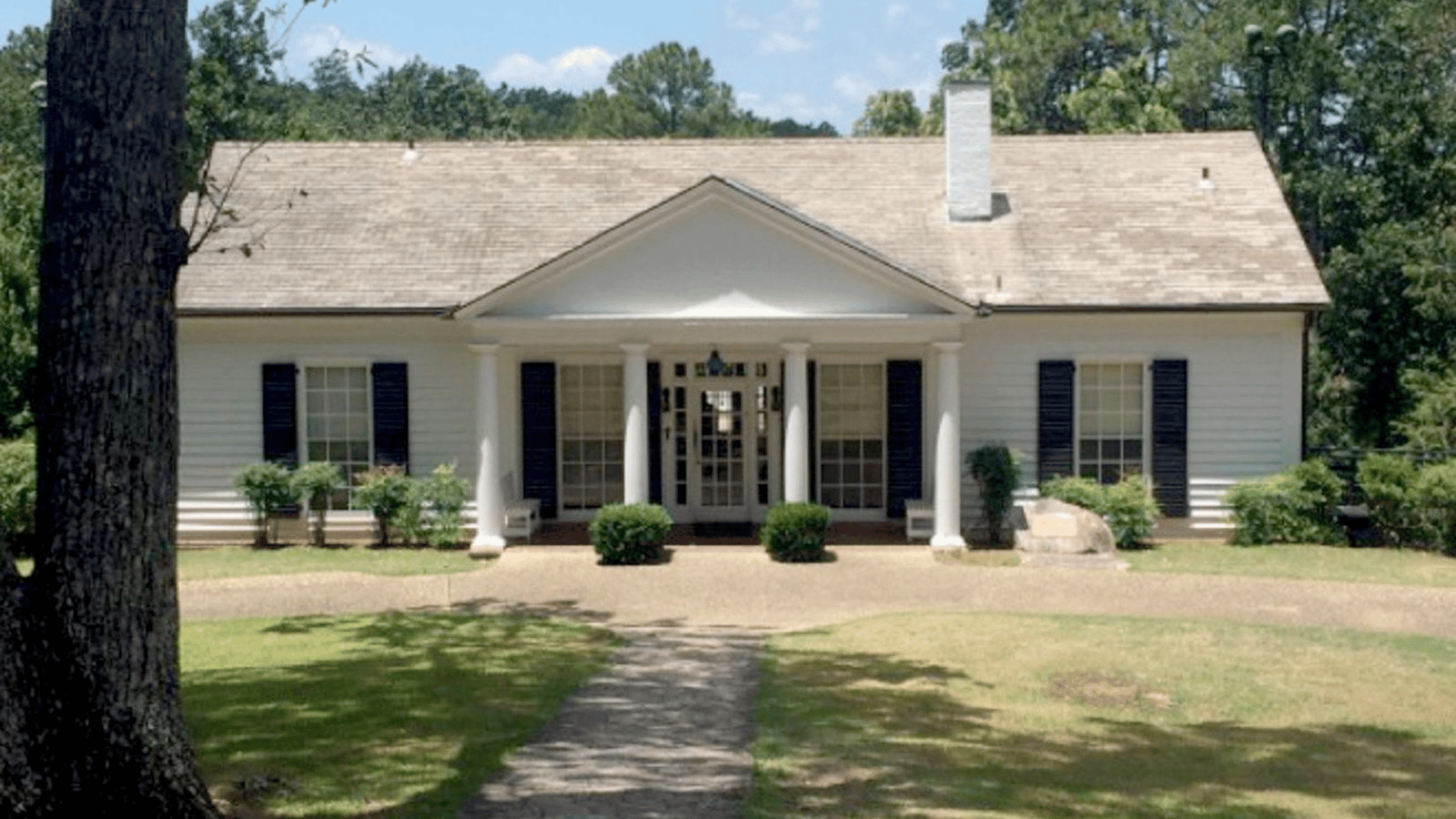
Things To Do At Warm Springs
Roosevelt built this house while he was the governor of New York before he became president, in search of relief and a cure for his polio.
He swam in the 88-degree spring waters, which didn’t cure his disease, but did bring him comfort and health improvements.
Top things to see and do here include the Unfinished Portrait, the Walk of Flags and Stone, Memorial Fountain, the guest and servant quarters, and scavenger hunts to learn more about history.
To make a weekend out of it, you can also check out the nearby city of Columbus, visit Callaway Gardens or spend time in the F.D. Roosevelt State Park.
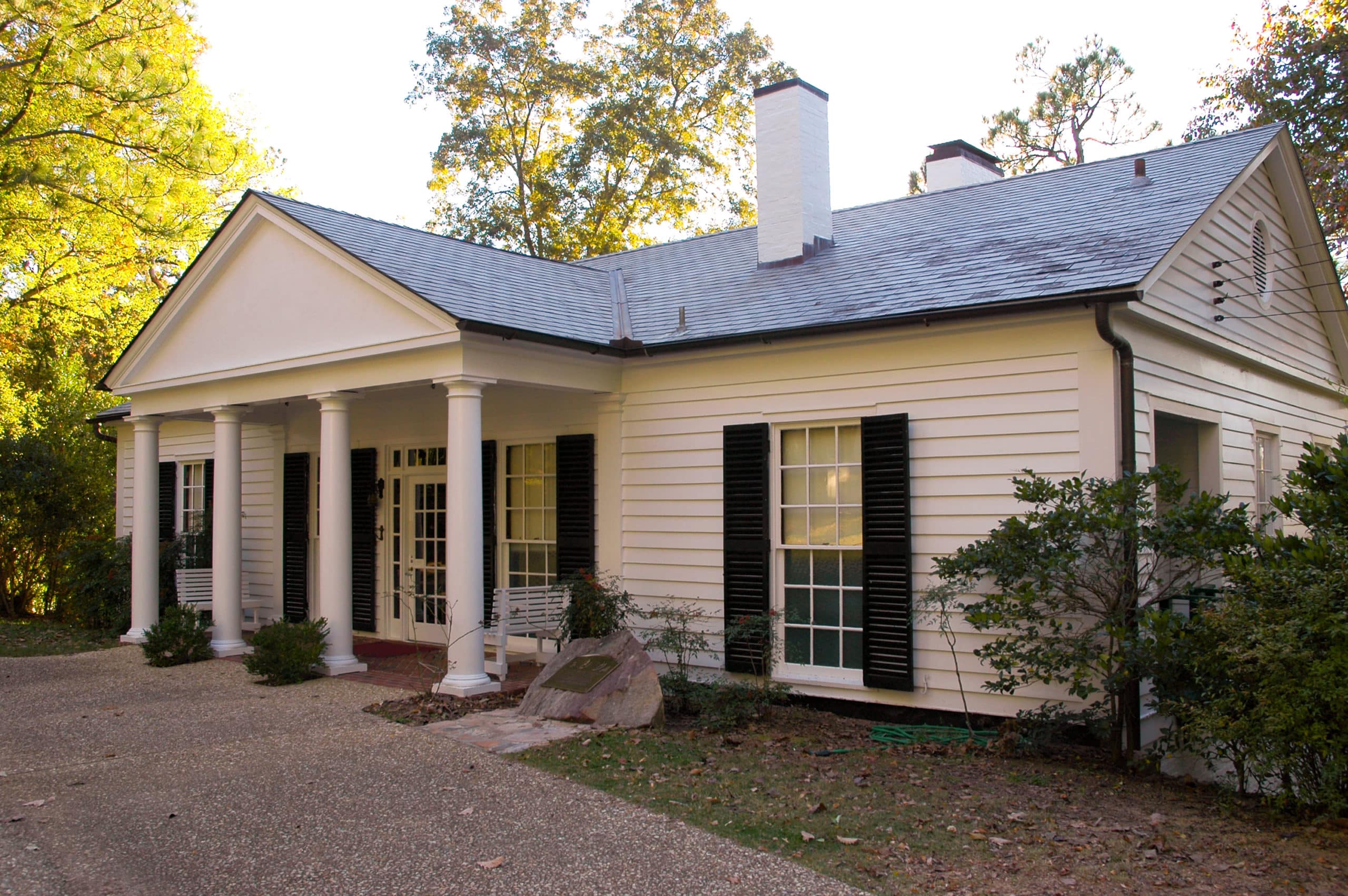
Check Out Our Great Smoky Mountain Film
More Than Just Parks is the only place you can go to find expert guides, beautiful photos, helpful tips, breathtaking films and so much more.
MTJP | Smoky Mountains is a visually stunning journey through Great Smoky Mountain National Park during peak fall color. This video is the culmination of two weeks exploring Great Smoky Mountains National Park.
We chose Great Smoky Mountains as our second park because of it’s extraordinary display of fall colors, it’s incredibly diverse wildlife population, and it’s importance as the most visited national park in the country.
This film was shot entirely in 4K UHD. We chose to capture this park in the Fall as it is home to one of the most wonderful displays of fall foliage on the planet.
Fall is also a wonderful time to watch the elk rutting season and experience cooler, less humid temperatures.
Situated in Tennessee & North Carolina Great Smoky Mountain is one a handful of southern National Parks.
Georgia National Parks FAQ
No, Georgia currently does not have a national park although Ocmulgee Mounds National Historical Park could become the state’s first national park.
While there are no congressionally-designated national parks in Georgia there are 12 national park sites in the state.
The must-see historic sites include the following:
Jimmy Carter National Historical Park
Martin Luther King, Jr. National Historical Park
Roosevelt’s Little White House At Warm Springs
Chickamauga & Chattanooga National Military Park
Fort Pulaski National Monument
Ocmulgee Mounds National Monument
Andersonville National Historic Site
Kennesaw Mountain National Battlefield Park
Fort Frederica National Monument
Jefferson Davis Memorial Historic Site
Dahlonega Gold Museum
Reynolds Mansion On Sapelo Island
Pickett’s Mill Battlefield State Historic Site
Jarrell Plantation Historic Site
Fort King George State Historic Site
Why Trust Us About National Parks In Georgia?
We’re Jim Pattiz and Will Pattiz, collectively known as the Pattiz Brothers (and sometimes the Parks Brothers) and we absolutely LOVE the national parks.
You should probably know that we don’t just make this stuff up out of thin air. We’ve spent our entire adult lives exploring and filming America’s national parks and public lands.
We’ve worked with the National Park Service, the Department of Interior, USDA, and the U.S. Forest Service for years creating films on important places and issues. Our work has been featured in leading publications all over the world and even some people outside of our immediate family call us experts on the national parks.

Meet The Parks Brothers
Map of Georgia National Parks
List Of Top 12 Georgia National Parks
- Andersonville National Historic Site
- Appalachian National Scenic Trail
- Chatahoochee National Recreation Area
- Chickamauga & Chattanooga National Military Park
- Cumberland Island National Seashore
- Fort Frederica National Monument
- Fort Pulaski National Monument
- Jimmy Carter National Historical Park
- Kennesaw Mountain National Battlefield Park
- Martin Luther King, Jr. National Historical Park
- Ocmulgee Mounds National Monument
- Warm Springs Historic District
We Hope You’ll Follow Our Journey
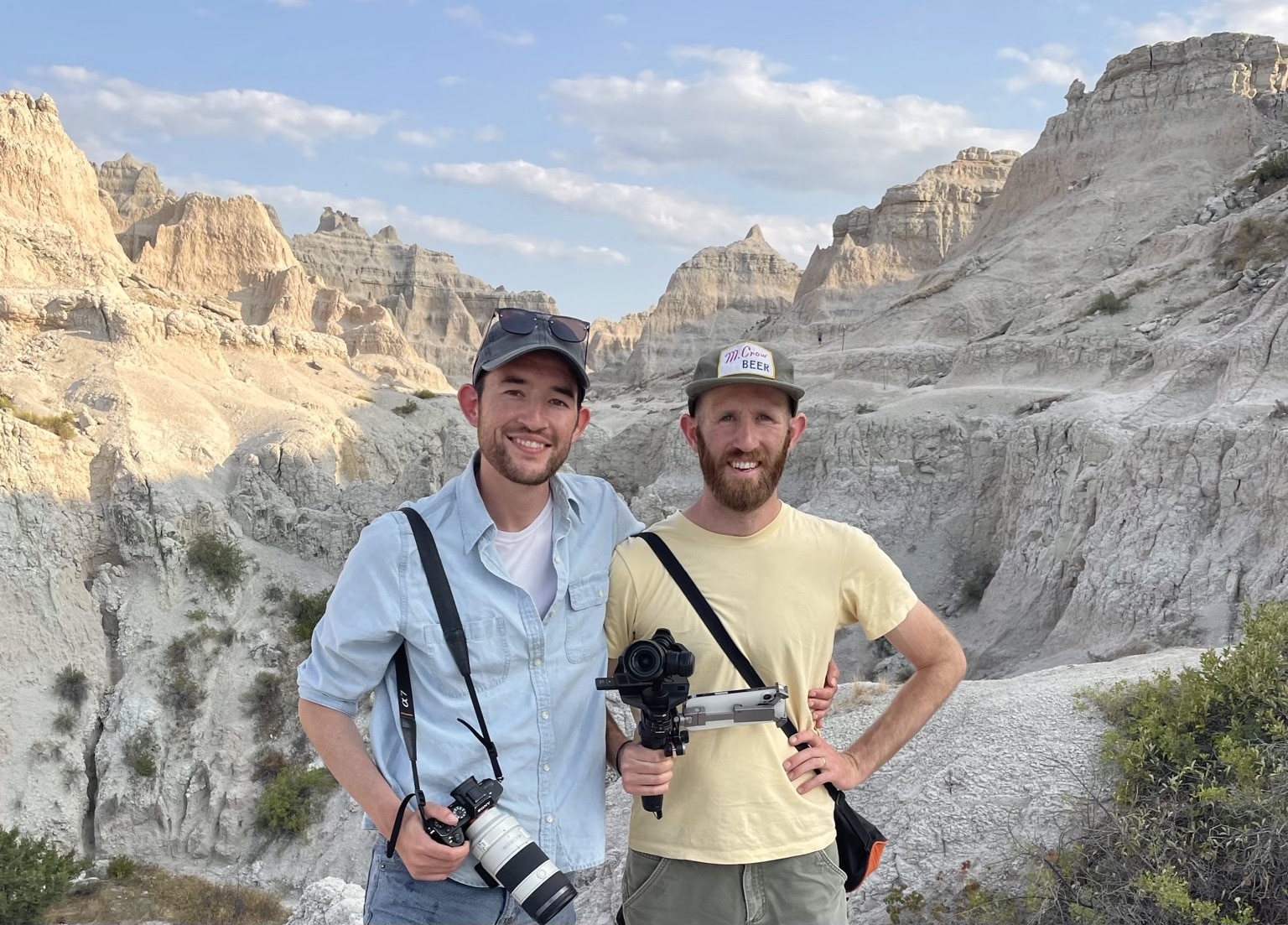
Our goal here at More Than Just Parks is to share the beauty of America’s national parks and public lands through stunning short films in an effort to get Americans and the world to see the true value in land conservation.
We hope you’ll follow our journey through the parks and help us to keep them the incredible places that they are. If you’re interested in joining the adventure then please sign up below!
Helpful Articles
National Parks: All 63 National Parks Ranked By Experts
National Monuments: Ultimate List Of National Monuments
Landmarks: 25 Famous Bucket List Landmarks In America (MUST-SEE)
Park Rangers: A Brief (& Informative) History Of America’s National Park Rangers
Gifts: 50 BEST National Park Gifts For The National Park Fan In Your Life
Books: 45 BEST National Parks Books
Revolutionary War Sites: 10 BEST Revolutionary War Sites In America
Civil War Sites: 10 BEST Civil War Sites In America
Civil Rights Sites: 10 BEST Civil Rights Sites In America
National Parks In Movies: Look Familiar? 25+ CLASSIC Movies Filmed In The National Parks
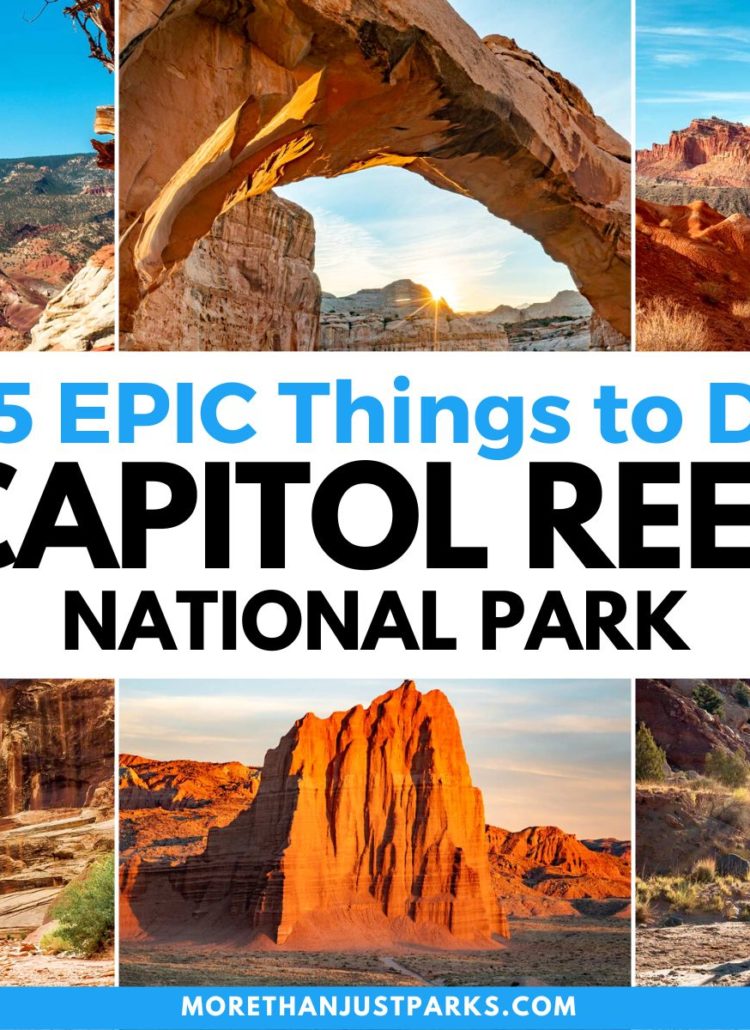
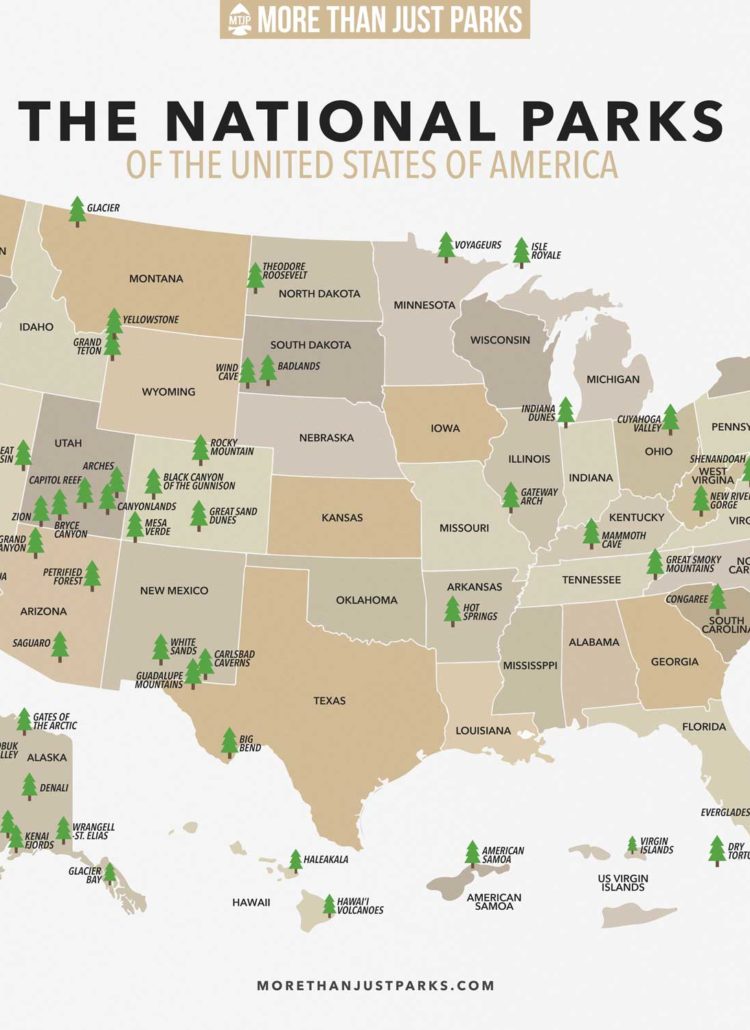
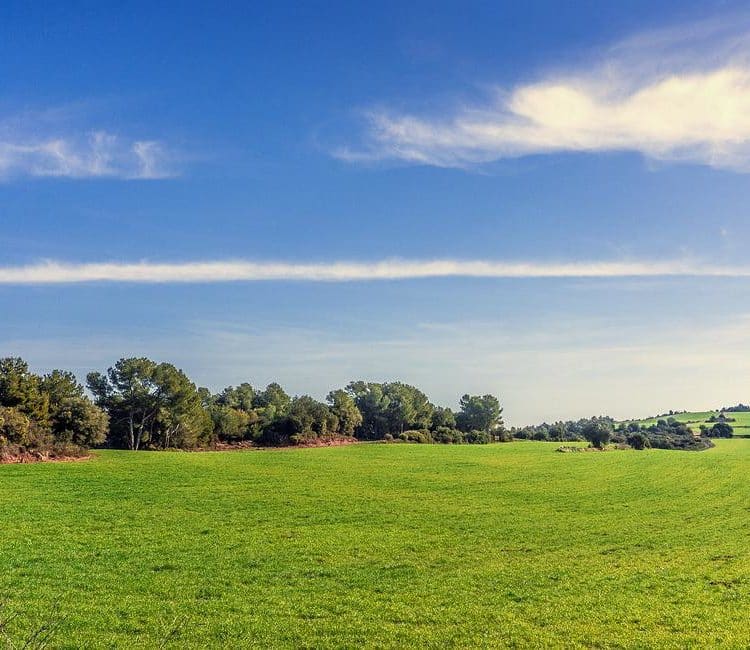
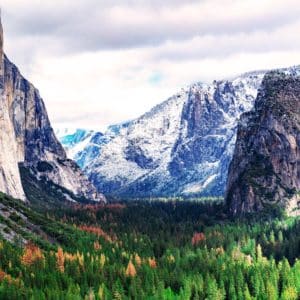

Leave a Reply